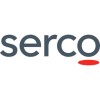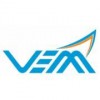Filter interviews by
Sattva AASPL Electrical Design Engineer Trainee Interview Questions and Answers
Sattva AASPL Electrical Design Engineer Trainee Interview Experiences
1 interview found
(2 Questions)
- Q1. Types of motors
- Ans.
Types of motors include AC motors, DC motors, stepper motors, and servo motors.
AC motors: commonly used for appliances and industrial applications
DC motors: used in battery-operated devices and automotive applications
Stepper motors: used in robotics and automation for precise control
Servo motors: used in control systems for accurate positioning
- Q2. Study all AC& D motors
Top trending discussions






Interview questions from similar companies

Electrical Technician Interview Questions & Answers
Airports Authority of Indiaposted on 26 Dec 2024
(2 Questions)
- Q1. What is multimiter
- Q2. What is megar

Senior Electrical Technician Interview Questions & Answers
Tata Advanced Systemsposted on 14 May 2024
(1 Question)
- Q1. Electrical questions and mechanical question and networking

I applied via Walk-in and was interviewed in Feb 2023. There were 2 interview rounds.
(2 Questions)
- Q1. What is your best quality?
- Q2. What experience do you have?
I had to work with a qualified electrician to get experience
Interview Preparation Tips

I applied via Referral and was interviewed before Apr 2023. There was 1 interview round.
(2 Questions)
- Q1. Difference between armature voltage control field control?
- Ans.
Armature voltage control involves changing the voltage applied to the armature of a DC motor to control its speed, while field control involves changing the field current to control the motor's speed.
Armature voltage control adjusts the voltage applied to the armature winding of a DC motor to control its speed
Field control adjusts the field current in the motor to control its speed
Armature voltage control is more commo...
- Q2. Design a boost converter?
- Ans.
A boost converter is a type of DC-DC converter that steps up the input voltage to a higher output voltage.
Use a switch (usually a MOSFET) to control the energy flow from input to output
Include an inductor to store and release energy
Add a diode to allow current flow in one direction
Use a capacitor to smooth out the output voltage
Implement a control circuit to regulate the output voltage
Interview Preparation Tips

Electrical Maintenance Engineer Interview Questions & Answers
Tata Advanced Systemsposted on 9 Jul 2021
I applied via Walk-in and was interviewed in Mar 2022. There were 4 interview rounds.
Interview Questionnaire
2 Questions
- Q1. How many years Experience in Electrical maintenance engineering.
- Ans.
I have 8 years of experience in electrical maintenance engineering.
I have been working as an electrical maintenance engineer for the past 8 years.
During my career, I have gained extensive knowledge and hands-on experience in troubleshooting electrical systems and equipment.
I have successfully completed various maintenance projects, ensuring the smooth operation of electrical systems.
I am well-versed in conducting preve...
- Q2. Have you worked for Tata group
Interview Preparation Tips

Diploma Electrical Engineer Interview Questions & Answers
Hindustan Aeronauticsposted on 27 Sep 2021
Interview Questionnaire
2 Questions
- Q1. Basic electrical
- Q2. Machine and transmission line
Interview Preparation Tips

Electrical Engineer Interview Questions & Answers
InterGlobe Aviationposted on 21 Jul 2021
Interview Questionnaire
1 Question
- Q1. Why your choosing this job
- Ans. I have so interested doing air lines
Sattva AASPL Interview FAQs
Tell us how to improve this page.
Interview Questions for Popular Designations
- Electrical Engineer Interview Questions
- Electrical Technician Interview Questions
- Electrical Supervisor Interview Questions
- Electrical Maintenance Engineer Interview Questions
- Electrical GET Interview Questions
- Diploma Electrical Engineer Interview Questions
- Senior Electrical Engineer Interview Questions
- Junior Engineer Electrical Interview Questions
- Show more
Sattva AASPL Electrical Design Engineer Trainee Interview Process
based on 1 interview
Interview experience
Interview Questions from Similar Companies
|
Process Engineer
11
salaries
| ₹1.6 L/yr - ₹4.3 L/yr |
|
Junior Process Engineer
7
salaries
| ₹2 L/yr - ₹2.4 L/yr |
|
Assistant Manager
4
salaries
| ₹2 L/yr - ₹5.4 L/yr |
|
Design Engineer
4
salaries
| ₹3 L/yr - ₹4.2 L/yr |
|
Quality Engineer
4
salaries
| ₹2.5 L/yr - ₹4 L/yr |

TCS

Infosys

Wipro

HCLTech
- Home >
- Interviews >
- Sattva AASPL Interview Questions >
- Sattva AASPL Electrical Design Engineer Trainee Interview Questions










